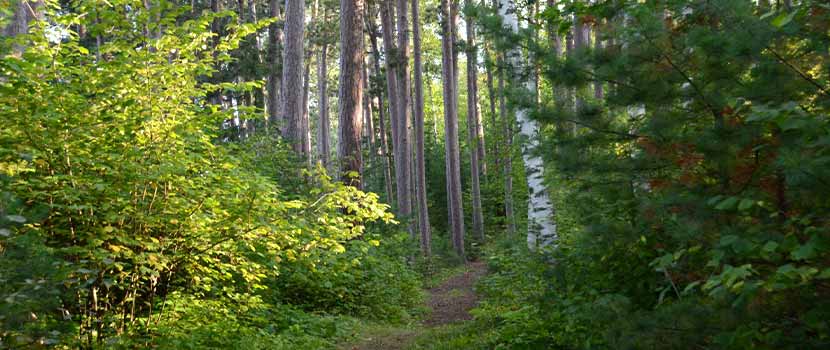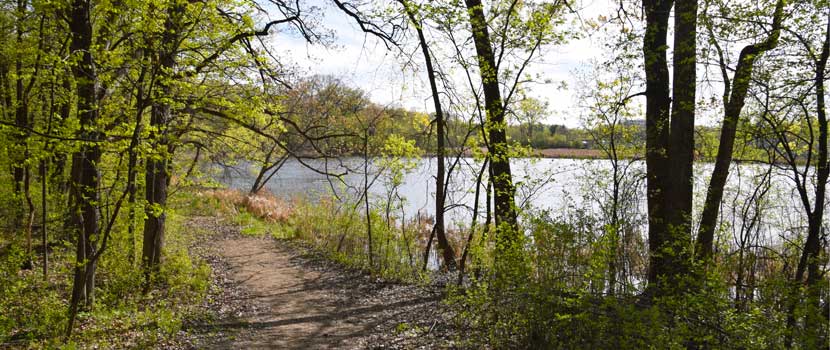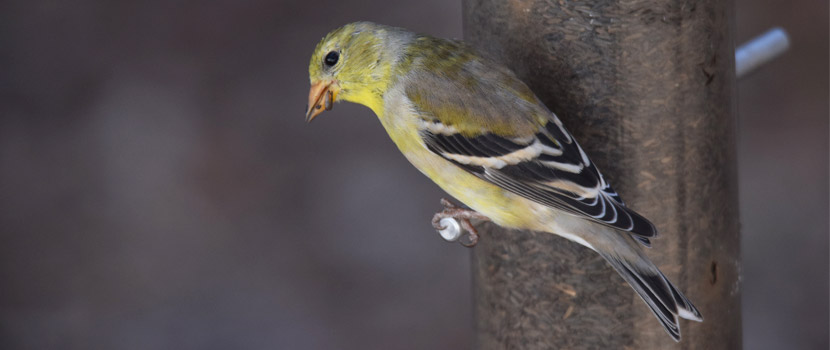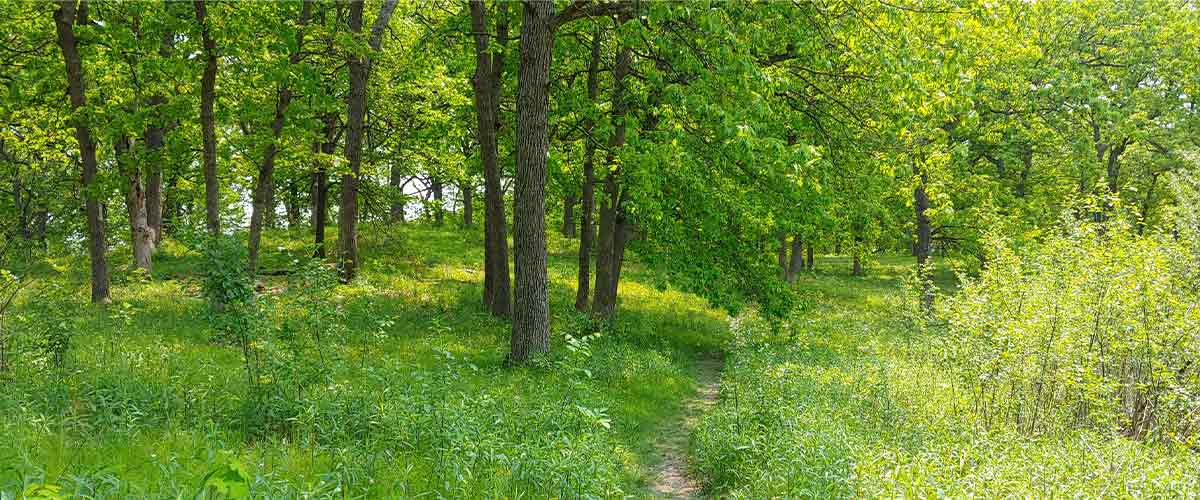
Nature Rx: Silverwood's Forest Bathing Trail
By: Mary Christine Kane
May 24, 2021
Category: Recreation
How often do we go for a walk through the woods and are so caught up in conversation, our destination, calorie-burn or our to-do list that we are not fully present in our surroundings?
A new self-guided, Forest Bathing Trail at Silverwood Park in St. Anthony helps visitors unplug and experience a meaningful and therapeutic immersion into nature.
What is forest bathing?
The term “shinrin-yoku,” originated in Japan in the 1980s and translates to “forest bath.” It’s a practice that encourages people to take a figurative healing bath in the forest by slowing down and experiencing it with our full senses.
Since shinrin-yoku was introduced, the idea caught on quickly in Japan and then across the globe. The Silverwood trail, which opened December 2020, is the first of its kind in Minnesota certified by the Association of Nature & Forest Therapy (ANFT).
David Donovan, Silverwood program coordinator said the trail is in line with what people are looking for from Three Rivers Parks, especially now. He said, “People want to get off of Zoom and are looking for a deep connection with nature.”
Forest Rx
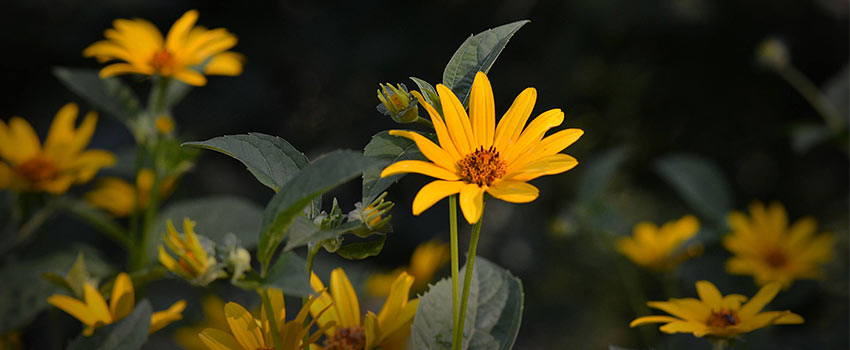
As the trailhead sign explains, time spent in nature enhances our health. The long list of benefits includes stress reduction, better focus, improved mood, an increased sense of calm, more altruistic behavior, enhanced creativity and boosting the immune system.
More doctors are realizing the profound impact of nature and some are even writing prescriptions for patients to spend time outdoors. For more information about the physical and psychological effects of nature, ANFT has a great list of research articles on their website.
What to expect
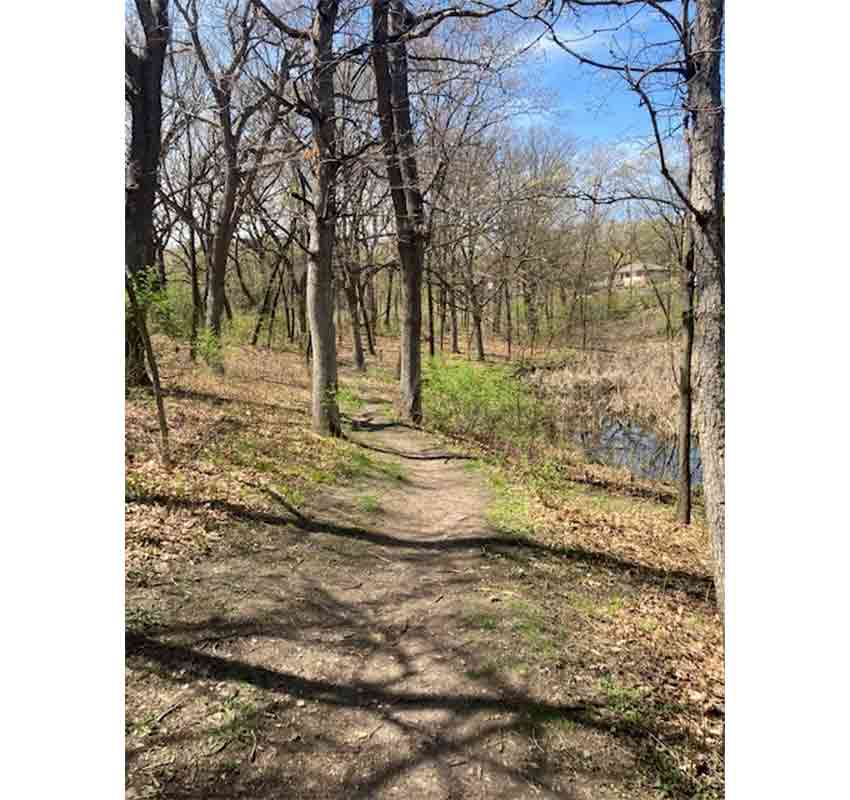
Although the path is just .25 miles, the suggested time spent on the trail is two hours. The two hours allows time to unwind and enter into a meditative state. David said some common feedback he hears is that people are surprised at how long they can spend on such a short span of trail, and he has experienced this himself.
“Often the time flies by and you don’t even realize you’ve had your eyes closed for 25 minutes,” he said. However, he encourages people to visit even if they only have limited time. “You can still get a great benefit from a quick visit."
Invitations to connect
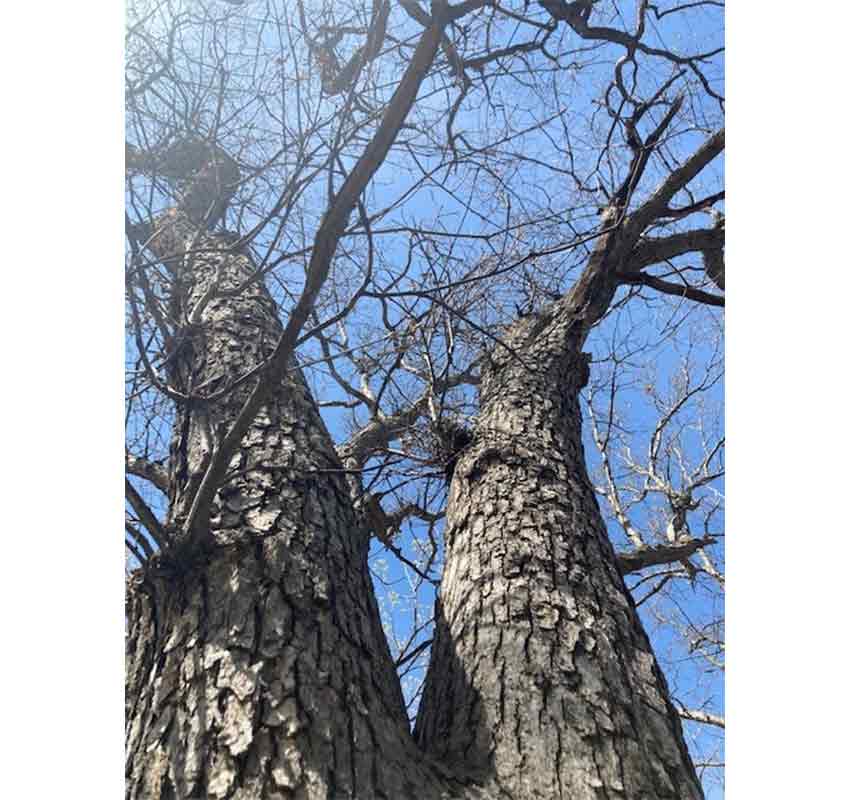
The trail has five guideposts after the trailhead sign. Each invites the visitor to connect with nature through a series of questions and suggestions.
For example, one post reads:
Touch: Stand still. Close your eyes. Can you feel the breeze or the sun/shade on your skin? What do you notice? Touch the fingertips of one hand to the back of the other, to your face, your clothing. How do these sensations feel?
Each suggestion helps further immerse the visitor into the experience. Similar to meditation, the journey helps awaken the senses.
Having previously known nothing about forest bathing, I wasn’t sure what to expect when I arrived at the trail. I found it surprising how quickly I was able to step back and gain a wider perspective of my surroundings by following the suggestions. One was about noticing sound. With careful listening I could hear frogs croaking, cars on a nearby street, people talking, a variety of birds singing in all directions and dried leaves rustling—all sounds I hadn’t fully noticed when entering the park.
One exercise asked you to find an object and study its texture. I spent a long while admiring the art of a papery, dried leaf, with its spectrum of oranges and yellows and rivers of reddish veins. I thought of its resiliency to last through the winter when it seemed so fragile that it could easily snap into two. I noticed too its sweetish smell.
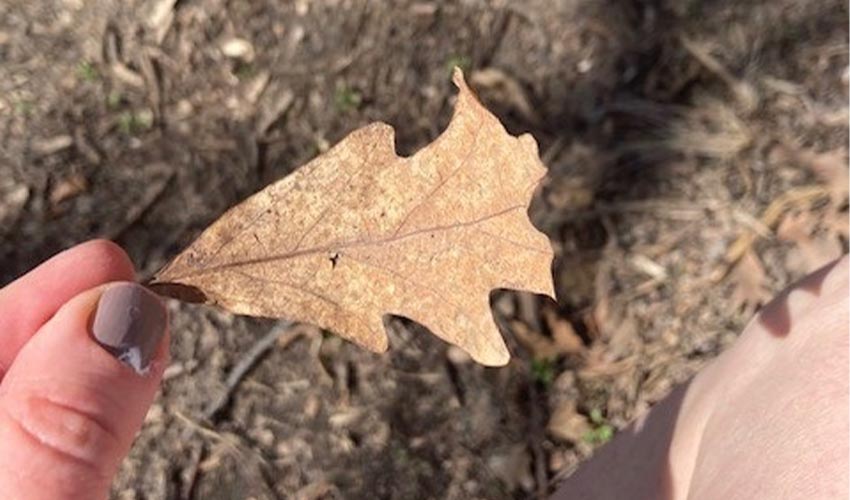
Each invitation brought me further away from the plugged in, fast-paced world I brought with me into the trail and deepened my relaxation.
My favorite of the meditations was called “Listen to a tree.” The instruction began with wandering to find a tree you are drawn to and sitting or standing near it. Then there are ideas to help you connect with that tree and to see it and be with it. I did feel like I connected with my tree, one that I wouldn’t have even noticed had I not tried the trail. It was a great comfort to me and also quite calming.
Tips before you visit
- The trail is meant to be integrated with its surroundings so it is not as conspicuous as the other trails in the park. It’s in the northeast corner of the park, quite close to the park entrance, just on your left when you enter the park.
- There is a road near the trail, so you may want to visit at a quieter time of time of day.
- Even though the trailhead sign says that you need a printed invitation guide, the signage along the trail has the same information.
- This trail can be visited in a group or alone. In fact, David says the trail is commonly visited by groups and sharing experiences along the path can enrich the practice.
Try it
Visiting the forest bathing trail is well worth the trip. It’s a chance to reconnect with your surroundings and an opportunity to learn something new. The skills you learn on the trail can be carried with you and practiced anywhere. The best part, you may feel a little more aware, connected and relaxed when you leave.
Watch for future guided forest bathing opportunities at Silverwood Park.
Learn More About Forest Bathing
Join Angela and Brandon from The Wandering Naturalist podcast as they immerse themselves in Minnesota's first certified forest-bathing trail at Silverwood Park with a certified ANFT Shinrin Yoku guide. Guests David Donovan and landscape architect David Motzenbecker provide further insight on healing in nature.
About the Author

Mary is a volunteer blog contributor who has been participating in Three Rivers Park District activities for many years, as both a volunteer and participant. She enjoys camping, hiking, skiing, biking, kayaking and canoeing. Mary is also a poet; her chapbook, Between the stars where you are lost, is available from Finishing Line Press. You can find her online at MaryChristineKane.com.
Related Blog Posts
5 Ways to Practice Mindfulness in Nature
By: Alyssa Schauer
Learn ways to be mindful in nature and discover how you can connect with the natural world in everyday life.
More Quiet(er) Parks to Explore
By: Erin Korsmo Andrea Breitung
We're back with another list of our favorite parks for a quieter walk. Read on to find your next place to spread out and explore.
The Joy of Backyard Birding
By: Erin Korsmo
Keeping bird feeders is a rewarding experience. Read on to learn why you should consider keeping feeders and how to get started at home.
